Over 20 years manufacturing experience of Road marking machine and road marking removal machine.
sales@lxdmarking.com+86 15805293662
Understanding the Importance of Accurate Roadline Marking
Roadline marking is a critical component of modern traffic management, serving as a lifeline for road safety and efficient traffic flow. The significance of accurate roadline markings cannot be overstated. A study by the Federal Highway Administration found that well-marked roadways reduce accidents by up to 25%. Imagine a scenario where poor roadline markings in a busy intersection lead to a series of minor accidents, each one a small reminder of how a few misplaced lines can have significant consequences. Roadline markings, whether white or yellow, are more than simple lines painted on the road. They are essential guides that enhance visibility, reduce confusion, and improve overall road safety. This article will explore the critical role of accurate roadline markings, examining their impact on safety, traffic management, and the benefits they bring to road users.
How Accurate Roadline Marking Contributes to Road Safety
The reduction in accidents is significantly influenced by the clarity and precision of roadline markings. Clear markings, such as white and yellow lines, stand out against various road conditions, improving visibility and reaction times. For instance, in dense traffic or adverse weather, well-maintained markings provide drivers with a reliable guide, preventing sudden lane changes or swerving. Without these markings, drivers may find it challenging to navigate roads effectively, leading to increased risks of accidents.
The Impact of Roadline Marking on Traffic Management
Accurate roadline markings are essential for organizing and managing traffic flow efficiently. They delineate lanes, ensuring that vehicles follow the correct path and reducing the likelihood of lane misuse. Markings also guide vehicles through complex intersections and roundabouts, mitigating congestion and accidents. For example, in urban areas with limited parking spaces, well-marked lanes can streamline traffic movement, improving overall mobility. Furthermore, markings help in managing directional signs, ensuring that drivers are informed about upcoming turns and crossings, thereby enhancing safety and efficiency.
Technological Advancements in Roadline Marking
The advent of advanced roadline marking technologies has revolutionized the way road surfaces are maintained. The roadline marking machine, a highly efficient tool, applies markings with precision and speed, reducing downtime and enhancing durability. This machine ensures that markings are applied evenly, covering large areas without the need for frequent labor-intensive manual work. The use of digital systems allows for real-time monitoring and adjustments, ensuring that markings remain effective and up-to-date. These technologies not only improve the quality of markings but also reduce maintenance costs, making them a cost-effective solution for traffic management.
Comparative Analysis: Accurate vs. Inaccurate Markings
While accurate markings offer numerous benefits, it is crucial to understand the potential drawbacks of inaccurate markings. Poorly applied or worn-out markings can create confusion, leading to increased accidents and traffic congestion. For example, in a busy intersection with inadequate markings, drivers may misinterpret signals, resulting in rear-end collisions or near-misses. In contrast, accurate markings provide a clear and unambiguous guide, reducing such risks. Thus, the importance of maintaining precise markings cannot be overstated.
Real-World Examples of Accurate Roadline Marking
Real-world examples highlight the transformative impact of accurate roadline markings. Consider a city that implemented a comprehensive road maintenance program, resulting in a 15% reduction in traffic congestion and a 25% decrease in accident rates. Another example is a highway with well-painted lanes, which not only improved visibility but also reduced the number of lane-changing incidents, enhancing safety for all road users. These case studies underscore the positive outcomes achievable through accurate roadline markings.
Challenges in Maintaining Accurate Roadline Markings
Despite the benefits, maintaining accurate roadline markings presents several challenges. Weather conditions, such as rain or snow, can degrade markings, making them less visible. Additionally, the material quality and the skill level of marking personnel can affect the longevity and precision of markings. To overcome these challenges, regular maintenance is essential, utilizing durable materials and training personnel to ensure accurate application. Implementing these strategies can help mitigate the challenges and ensure that markings remain effective.
Reinforcing the Importance of Accurate Roadline Marking
accurate roadline markings are vital for maintaining road safety and efficient traffic management. They enhance visibility, reduce accidents, and guide drivers through complex road networks. The use of advanced technologies has further improved the quality and efficiency of markings, making them an indispensable component of modern traffic systems. As we continue to prioritize road safety and traffic management, accurate roadline markings remain a cornerstone of effective road infrastructure. By investing in their maintenance and upgrading, we can create a safer and more efficient road environment for all users.

